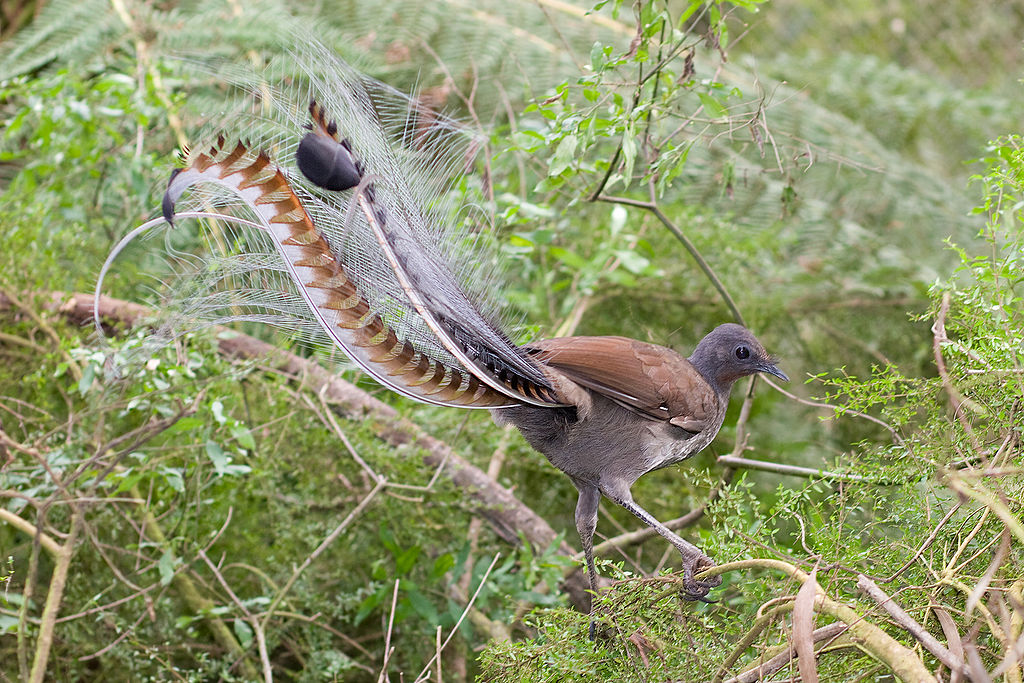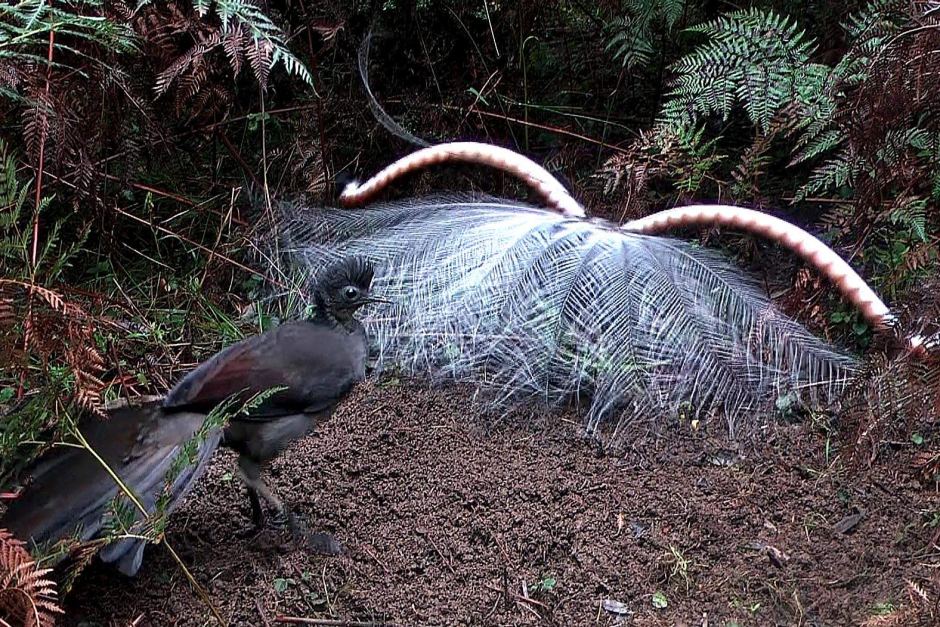
While parrots are usually credited as the avian world’s best mimickers, the title probably belongs to the aptly named superb lyrebirds. Endemic to Australia, the ground birds are extremely shy and difficult to approach. Hence, though researchers have known of their ability to imitate everything, from other birds, to humans, and even car alarms and chainsaws, very little was known about their lifestyle in the wild. Now thanks to a team of researchers led by Dr. Anastasia Dalziell, a Postdoctoral Associate at the Cornell Lab of Ornithology, we finally have some insight into these amazing ancient animals that have been around for millions of years.
Dalziell’s first study, conducted a few years ago, focused on the male superb lyrebirds. The birds that measure 2.6-3.2 feet long, sport elaborate tails that comprise sixteen feathers. with the outermost two forming a shape that resembles a musical harp-like instrument called lyre. The researchers found that the excellent sound impersonators can match their vocalization with well-choreographed dance movements, and even identified four song and dance routines the birds appeared to have mastered. But unlike humans, the moves that take the males years to perfect, are not for entertainment, but to impress female birds during mating season. While that may appear excessive, it is necessary. Dalziell and her team say the males often spend up to six hours courting a potential partner, only to see the female strutting away to see what other suitors have to offer.
With the male superb lyrebird’s talents revealed, the researchers recently returned to the Blue Mountains National Park in New South Wales to observe the females. The slightly smaller birds, with brown tail feathers that provide perfect camouflage against the forest floor, are also known for their mimicking skills. However, researchers were unsure of how these talents were used in the wild.
The results of the study, published in the journal Frontiers in Ecology and Evolution in March, indicate that the females are as talented as the males. They can mimic up to 19 different species of birds, including parrots, hawks, cockatoos, cuckoos, and even the sound of bird wing beats. Their favorite, however, appears to be Australia’s iconic bird — the laughing kookaburra!

However, the reason for their vocalization is not to court males, but to defend their young and protect their territory from other females. The scientists suspect that the female lyrebird’s “whistle song,” a combination of whistles, whoops, and squawks, sung while foraging, was to warn other females from entering their territory. The birds were also heard defending their nests with hawk-like sounds.
While the researchers are not entirely sure, they suspect that the superb lyrebird's mimicking capabilities may have something to do with their voice box, which has three syringeal muscles, instead of the normal four sported by most songbirds. They are also not sure why the the birds choose to mimic so many sounds. One possibility is that they have an incredible memory that allows them to store and reproduce sounds when they need to. And in case you are wondering, the superb lyrebirds do possess some original sounds as well. According to Hollis Taylor, a doctoral student at the University of Technology in Sydney, the commonly heard loud and metallic sounds like twanging, clicking, scissors-grinding and thudding, are all original superb lyrebird creations!

Though Dalziell and her team have been able to uncover a lot about these mysterious birds, they are not done. The researchers are currently back in the forests where the "the lyrebirds are singing in earnest!" to try to find out more — so stay tuned!
Resources: wikipedia.org, phys.org, zmescience.com, wired.com